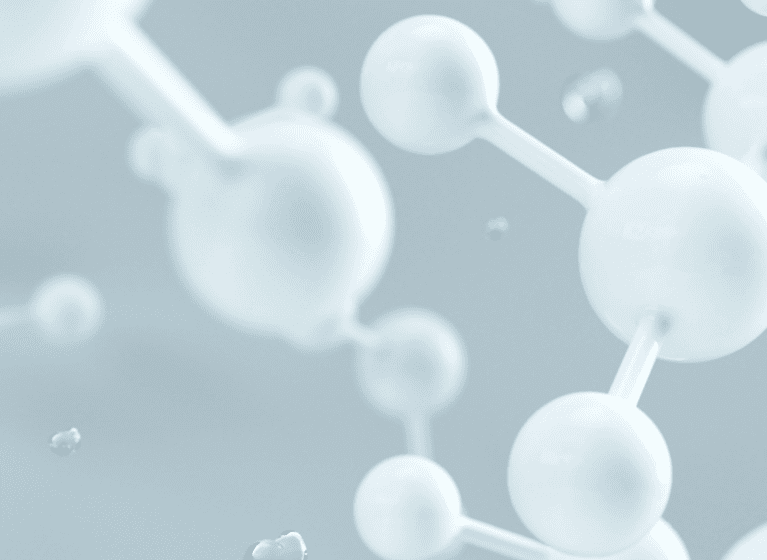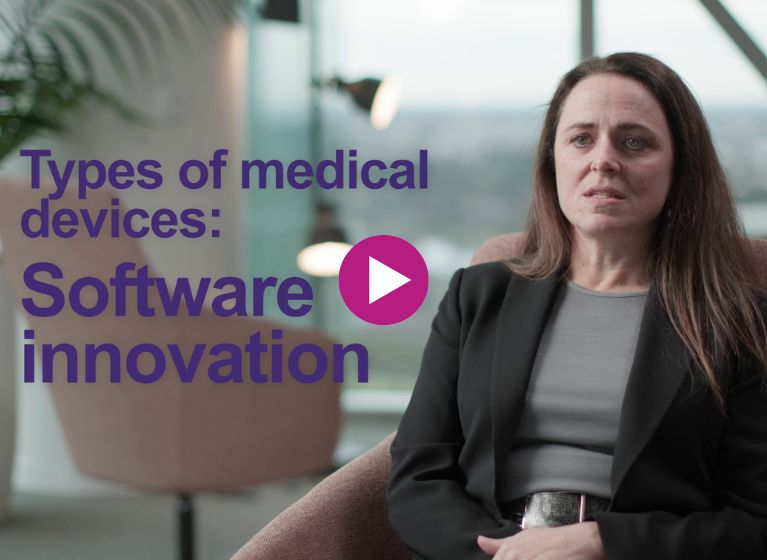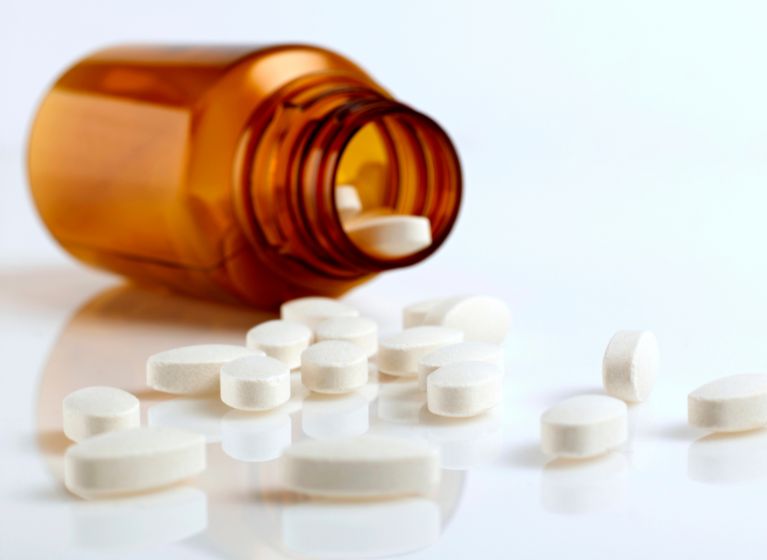Beyond the 20 year patent term, there are additional pathways for extending and maximising the commercial life of pharmaceutical products and associated intellectual property rights. In this three-part series of articles, we will summarise some of the provisions available in different jurisdictions for extending the protection to which a pharmaceutical product is entitled.
This first article summarises the requirements in some key jurisdictions for obtaining an extension of patent term for pharmaceutical patents.
Patent term extension regimes have been implemented in a number of jurisdictions following recognition that the need to obtain regulatory approval for a product may erode the effective life of a patent associated with that product.
1. United States
(a) Claim type which can be extended
The term of a US patent may be extended if at least one claim of the patent relates to:
- a product that requires pre-marketing regulatory approval; or
- a method of using or manufacturing a product that requires pre-marketing regulatory approval.
Relevant products include human and veterinary pharmaceuticals, food additives, colour additives and medical devices.
The product must be specifically recited in the claim language: it is not possible to obtain an extension of term based on a claim that is argued to “inherently” include the relevant product. For example a patent claiming only the metabolite of an approved prodrug is not eligible for a patent term extension).
(b) Number of patents that can be extended per product requiring regulatory approval
The term of only one patent can be extended based on the same regulatory review period for a given product (one patent term extension per product per patent).
If a patent covers two distinct products, and both products are subject to regulatory review, only one extension of the patent is possible.
(c) Requirements for filing and obtaining patent term extension
An application for patent term extension must be filed at the USPTO within 60 days of obtaining regulatory approval of the product.
The application for patent term extension must indicate that the patent has not expired and that the patent has not previously been extended based on a regulatory review.
The application must also establish that the product that is the subject of the patent was subject to regulatory review. Details about the patent and the activities undertaken to secure regulatory approval must be included. In addition, the application must state the length of the term extension requested and explain how this extension was determined.
Although an application for patent term extension cannot be submitted before the product receives regulatory approval, an interim extension of patent term of not more than 1 year can be obtained if the regulatory review period is reasonably expected to extend beyond the original expiration date of the patent. (This is so as to maintain patent term until regulatory approval is obtained). Such an application for interim term extension may be submitted in the period 6 months prior to patent expiration (but not after 15 days prior to expiration).
Up to 4 additional interim extensions may be applied for if regulatory approval is not obtained within the 1 year of the first interim extension.
Any interim extension terminates at the end of the 60 day period beginning on the day on which the product involved receives regulatory approval unless the applicant submits an application for term extension within this period.
(d) Duration of patent term extension
The period of the extension is calculated based on the time the relevant product was subject to clinical testing and regulatory review.
The maximum extension period is calculated by adding one-half of the time spent in the testing phase, to all the time spent in the review phase.
However, the extension period may be reduced if:
- any of the clinical testing and regulatory review occurred prior to the issue of the patent; or
- if the applicant is considered not to have acted with due diligence during clinical testing or regulatory review.
Briefly:
Extension period = 0.5 (No days in Testing Phase – No days of lack of due diligence during Testing Phase – No days of testing phase that preceded grant of relevant patent) + (No days in Regulatory Review Phase – No days of lack of due diligence during Regulatory Review Phase – No days of Regulatory Review Phase that preceded grant of the relevant patent).
The extension period must be no more than 5 years. In addition, the total period of the extension following regulatory approval must not exceed 14 years.
For more information on patent term extensions in the US, please see:
- Heaney, B. and Shubin, H.B., ’Patent Term Extensions in the United States of America’, In, Markgraf, A. (ed) Patent Term Extensions (Nomos Verlagsgesellschaft, 2015);
- USPTO website in relation to 35 U.S.C. §156. 2 37 C.F.R. §1.710 (2012); 37 C.F.R. §§ 1.775 (calculation of the length of the extension period for a patent directed towards a human drug, an antibiotic drug, or a human biologic); 37 C.F.R. § 1.720 (conditions for PTE); and 37 C.F.R. § 1.740 (2012) (formal requirements for an application for extension of patent term)
2. Europe
Supplementary Protection Certificates (SPCs) are an intellectual property right which serve to extend the patent term for European patents directed to medicinal and plant protection products which have been the subject of pre-marketing regulatory approval. The medicinal product may be for human or animal use.
SPCs may be obtained in all member states of the EU and in addition, in Norway and Iceland (by virtue of the membership of those countries in the European Economic Area). Switzerland, which is not a member of the EU or the European Economic Area, has its own national system for granting SPCs based on local patents and authorisations.
(a) Claim type which can be extended
An SPC may be granted in respect of a patent which has claims directed to:
- the active ingredient(s) of an authorised medicinal or plant protection product;
- a method of producing the active ingredient(s) in an authorised medicinal or plant protection product;
- an application (i.e., use) of the active ingredient(s) in an authorised medicinal or plant protection product; or
- a preparation (formulation or composition) containing an authorised medicinal or plant protection product.
In order to obtain an SPC, the patent must be in force in the country where the SPC is being sought at the time the SPC is filed. The patent can be obtained from the EPO or directly from a national office.
The regulatory approval of combination products (i.e., containing more than 1 active ingredient) can serve as the basis for an SPC. However, the SPC will only be granted in respect of the claim scope of the relevant patent for which the SPC is being sought. In other words, in order to obtain an SPC for a combination product that includes an active ingredient for which an SPC has already been granted, the combination product must represent a distinct invention.
For example:
- if the SPC application relates to a product containing A+B, but the patent claim only defines A, then the SPC must be limited to A;
- if the SPC application relates to A+B, an SPC with respect to A+B will be rejected unless the claim of the associated patent also is directed to A+B; and
- an SPC that is limited to A will be enforceable against a third party seeking to supply a product containing A+B.
- In certain circumstances it may also be possible to obtain an SPC for a new application (indication) of a previously authorised product (for example, a new and inventive therapeutic use of an old active ingredient).
(b) Number of patents that can be extended per product requiring regulatory approval
If there is more than one patent owned by one or more entities, directed to an authorised medicinal or plant protection product, an SPC can be obtained on any one of these patents. (For example, a patentee may obtain an SPC even if they are not the sponsor of the product that has received regulatory approval, provided that the active ingredient in the approved product falls within the scope of a claim of the patent for which the SPC is being sought).
Where a patent relates to several active ingredients, which have been included in different products, each of which has been the subject of a separate regulatory procedure, then separate SPC applications must be filed in respect of each active ingredient for which the patent term extension is sought.
More than one SPC may be granted for a patent, where that patent covers more than one product.
(c) Requirements for filing and obtaining patent term extension
For each country where SPC protection is sought, a separate SPC application must be filed. In each case, the application must be filed within 6 months of the grant of the first marketing authorisation in that country for the active ingredient in question. The marketing authorisation must relate to a product which incorporates the active ingredient (or mixture).
If the patent is not granted until after marketing authorisation, then the SPC application must be filed within 6 months of the patent grant.
(d) Duration of patent term extension (SPC)
The aim if the SPC regime is to provide an “effective” patent term of 15 years. This means that the duration of the SPC is equal to the period elapsed between the filing of the patent application and grant of the first EU marketing authorisation, minus 5 years.
An SPC can be granted even if this calculation results in a negative number, although this is not typical. This may occur however, where the patent is directed to a product with a paediatric indication, since the additional 6 month extension provided in relation to these products may make the overall calculation positive.
(e) Paediatric indications
A 6 month additional extension is available if the SPC relates to a medicinal product for children (so-called “paediatric indication”), for which data has been submitted according to a Paediatric Investigation Plan (PIP). The additional 6 month protection is a compensation for the additional clinical trials and testing required for obtaining regulatory approval of a paediatric medication.
For more information on SPCs in Europe please see:
- Markgraf A., ‘Supplementary Protection Certificates in the European Union’, In, Markgraf, A. (ed) Patent Term Extensions (Nomos Verlagsgesellschaft, 2015);
- Regulation (EC) No 469/2009 of the European Parliament and of the Council of 6 May 2009 concerning the supplementary protection certificate for medicinal products;
- Regulation (EC) No 1901/2006 of 12 December 2006 on medicinal products for paediatric use and amending Regulation 1768/92, Directive 2001/20/EC, Directive 2001/83/EC and Regulation (EC) No 726/2004
3. Japan
(a) Claim type which can be extended
In Japan, the 20 year term of a patent may be extended if the patent relates to a pharmaceutical product or an agrochemical product that requires pre-marketing regulatory approval.
The product for which regulatory approval is being sought, must fall within the scope of a claim of the patent being extended. However, the claims do not need to be limited to the product per se, and can include process of manufacture and use claims.
(b) Number of patents that can be extended per product requiring regulatory approval
Multiple patents can be extended based on the same regulatory approval date. (For example if there are different patents directed to different aspects of the invention, such as the use, process of manufacturing, formulation etc).
Furthermore, subsequent regulatory approval for the same active ingredient, may serve as the basis for an additional extension of term of the same patent. The subsequent regulatory approval may be for a different use (indication) or dosage form as an earlier regulatory approval. In other words, the same patent may be extended more than once, based on different regulatory approvals.
The regulatory approval of more than one product can be relied upon for the purpose of extending the term of a patent.
(c) Requirements for filing and obtaining patent term extension
An application for an extension of term must be filed within 3 months of the first regulatory approval of a product containing the pharmaceutical or agrochemical product. The regulatory approval must be the first in relation to the product and its indication/dose. Subsequent regulatory approvals may be relied upon if the indication or dose changes in respect of the same product, and for the same patent.
The time lost in the regulatory process while the patent application is still pending does not count towards the patent term extension. Given this, it may be advantageous to obtain early patent grant, to maximise the period of extension.
The request for patent term extension must be filed by the patentee (including any co-patentees).
(d) Duration of patent term extension
The length of the patent term extension is calculated to be equivalent to the time between:
i) the start of any trials required for regulatory approval (clinical trials in the case of pharmaceuticals or field trials in the case of agrochemicals); or
ii) the date of grant of the patent (i.e., the day on which the grant fee is paid)
whichever is the later,
and
iii) the day before regulatory approval is mailed to the patentee.
The period of the extension is equivalent to the difference between dates i) or ii) and iii), provided that is it not more than 5 years.
Further, where multiple extensions of patent term are sought for the same patent (based on more than one regulatory approval), the total period of extension still may not exceed 5 years.
For more information on patent term extensions in Japan, please see:
- Watanabe, Y., ’Patent Term Extensions in Japan’, In, Markgraf, A. (ed) Patent Term Extensions (Nomos Verlagsgesellschaft, 2015)
4. Australia
(a) Claim type which can be extended
In order for an Australian patent to be eligible for patent term extension, the claims of the patent must be directed to either:
- a pharmaceutical substance per se, or
- a pharmaceutical substance when produced by a process that involves the use of recombinant DNA technology.
The pharmaceutical substance must in substance be disclosed in the patent, and must fall within the scope of a claim of the patent.
The term “pharmaceutical substance per se” is generally interpreted by the Australian Patent Office to include: a compound, an active metabolite, a composition or a mixture of substances.
In relation to pharmaceutical substances which are not produced by recombinant DNA technology, claims directed to a product only will be eligible for patent term extension.
Where the claims relate to a pharmaceutical substance that is produced by recombinant DNA technology, the claims must still be directed to a product, or else a process using DNA technology used to produce the product.
The Full Federal Court of Australia recently clarified that it is not possible to extend the term of a patent, where the claims are directed to the use of a pharmaceutical product that is made by recombinant DNA technology. For example, it is not possible to extend the term of a patent where the claims are in the form of method of medical treatment or Swiss-format claims and where the pharmaceutical product per se does not fall within the scope of the claim.
In other words, in order to be eligible for a patent term extension, “it is the pharmaceutical substance that must be the subject matter of the claim or claims, not methods or processes (beyond recombinant DNA technology) concerning or involving the pharmaceutical substance”.
Combination products (e.g., containing 2 or more active ingredients) have traditionally been interpreted by the patent office as being directed to new pharmaceutical products, such that the first regulatory approval is considered to be the first regulatory approval of the combination product (rather than the first regulatory approval of a product containing only one of the actives).
(b) Number of patents that can be extended per product requiring regulatory approval
It is possible for more than 1 patent to be eligible for patent term extension, based on the same regulatory approval. However, the pharmaceutical product contained in the product that is the subject of the regulatory approval, must fall within the scope of at least 1 claim of each patent, and the request for patent term extension must be filed by the appropriate dates, as outlined further below.
(c) Requirements for filing and obtaining a patent term extension
The pharmaceutical substance (which must fall within the scope of a claim of the patent for which extension is sought), must be included in the Australian Register of Therapeutic Goods (ARTG) (in other words, the substance must have regulatory approval).
To be eligible for a patent term extension, there must be at least 5 years between the date that the patent application was filed, and the date of first marketing approval of any product containing the pharmaceutical substance.
Further, to be eligible for an extension of term, the application for an extension of term must be made within:
- 6 months of the grant of the patent; or
- 6 months from the first regulatory approval date (and therefore inclusion in the ARTG),
whichever date is the later.
Subsequent regulatory approval for a product having the same pharmaceutical substance (e.g., subsequent approval for a different indication of the same product) cannot serve as the basis for an extension of term.
(d) Duration of patent term extension
The maximum period of the patent term extension is 5 years. The extension term granted is calculated by determining the difference of the time period from the filing date of the patent to the first regulatory approval date, less 5 years.
(e) Patentee rights during extended patent term
Under Australian law, the rights of a patentee during the “extended patent term” are limited compared with the rights during the remainder of the term (i.e., the term prior to extension).
During the extended term, the following activities by a third party are not considered to be an infringement of a claim of the extended patent:
- exploitation of any form of the invention that is not a pharmaceutical substance and
- exploitation of pharmaceutical substances for non-therapeutic uses.
(Regardless of whether a patent is extended, it will not be infringed by a party exploiting a pharmaceutical substance falling within the scope of the patent’s claims, if that exploitation is solely for the purpose of obtaining goods included in the ARTG, or for obtaining regulatory approval in another jurisdiction).
For more detailed information on the patent term extension regime in Australia, please see:
- Maddigan, P., Slizys, D., and Whenman, P., ’Patent Term Extensions in Australia’, In, Markgraf, A. (ed) Patent Term Extensions (Nomos Verlagsgesellschaft, 2015)
- Commissioner of Patents v AbbVie Biotechnology Ltd [2017] FCAFC 129
5. Other jurisdictions
Canada
Canada has recently introduced a patent term extension regime. Certificates of Supplementary Protection (CSPs) provide a maximum 2 year extension on patent term.
An application for a CSP must relate to a drug product containing a new medicinal ingredient, or new combination of medicinal ingredients, wherein the products are covered by the claims of a relevant patent. The claims of the patent must be directed to a product, product-by-process or use (but not to a formulation).
In order to be eligible for a CSP, the patentee must have filed a New Drug Submission in Canada within 12 months for the first equivalent international filing in any of the US, Europe, Switzerland, Australia, or Japan. (This period is 24 months for the first year of the new regulations).
Application for a CSP must be made before either:
a) 120 days from regulatory approval from Health Canada (where the patent is granted before regulatory approval); or
b) 120 days after grant of the patent (where regulatory approval is obtained before grant of the patent).
There is no extended protection provided for paediatric indications.
Singapore
A maximum 5 year extension of patent term may be obtained for Singaporean patents which have claims directed to “any substance which is an active ingredient of any pharmaceutical product.” The product must be for human use and substances used for diagnosis and testing, devices, homeopathic medicines, foods, food additives and supplements and naturally occurring substances are excluded.
In order to be eligible for a patent term extension, the pharmaceutical product which is the subject of the patent claims, must be the first product containing the active ingredient to obtain marketing approval.
To obtain a patent term extension, the patentee must demonstrate that there was a “reasonable curtailment” to the opportunity to exploit the patent, as a result of delays in obtaining marketing approval. “Reasonable curtailment” means that marketing approval must be obtained after grant of the patent, and the time between filing a request for marketing approval and the date of approval must be more than 2 years.
The above is intended to provide a high level summary of patent term extension regimes in different jurisdictions. We recommend that you consult with a practitioner qualified to practice in the relevant jurisdiction before making any decisions with respect to relying on or obtaining patent term extensions for your patents.






